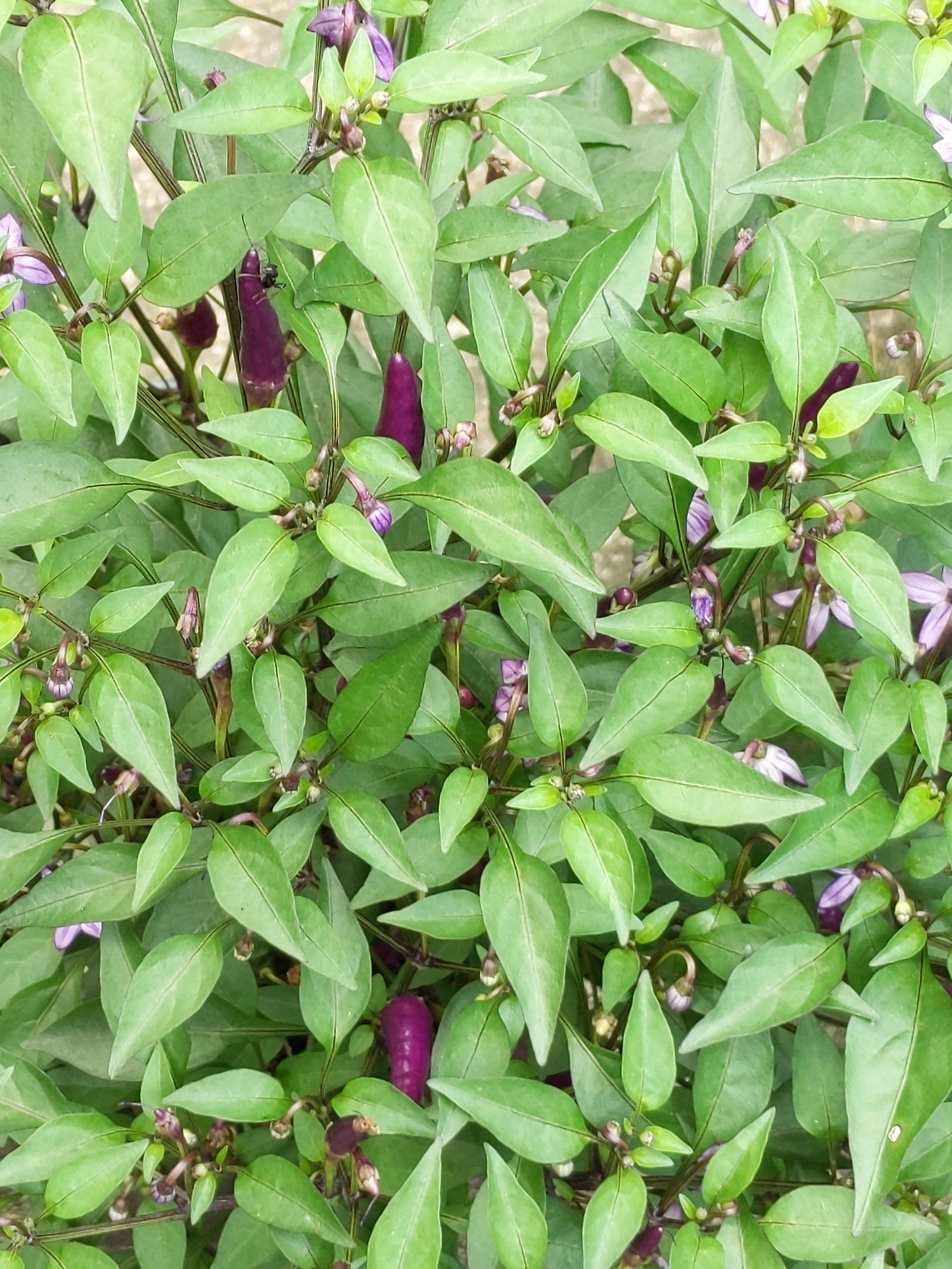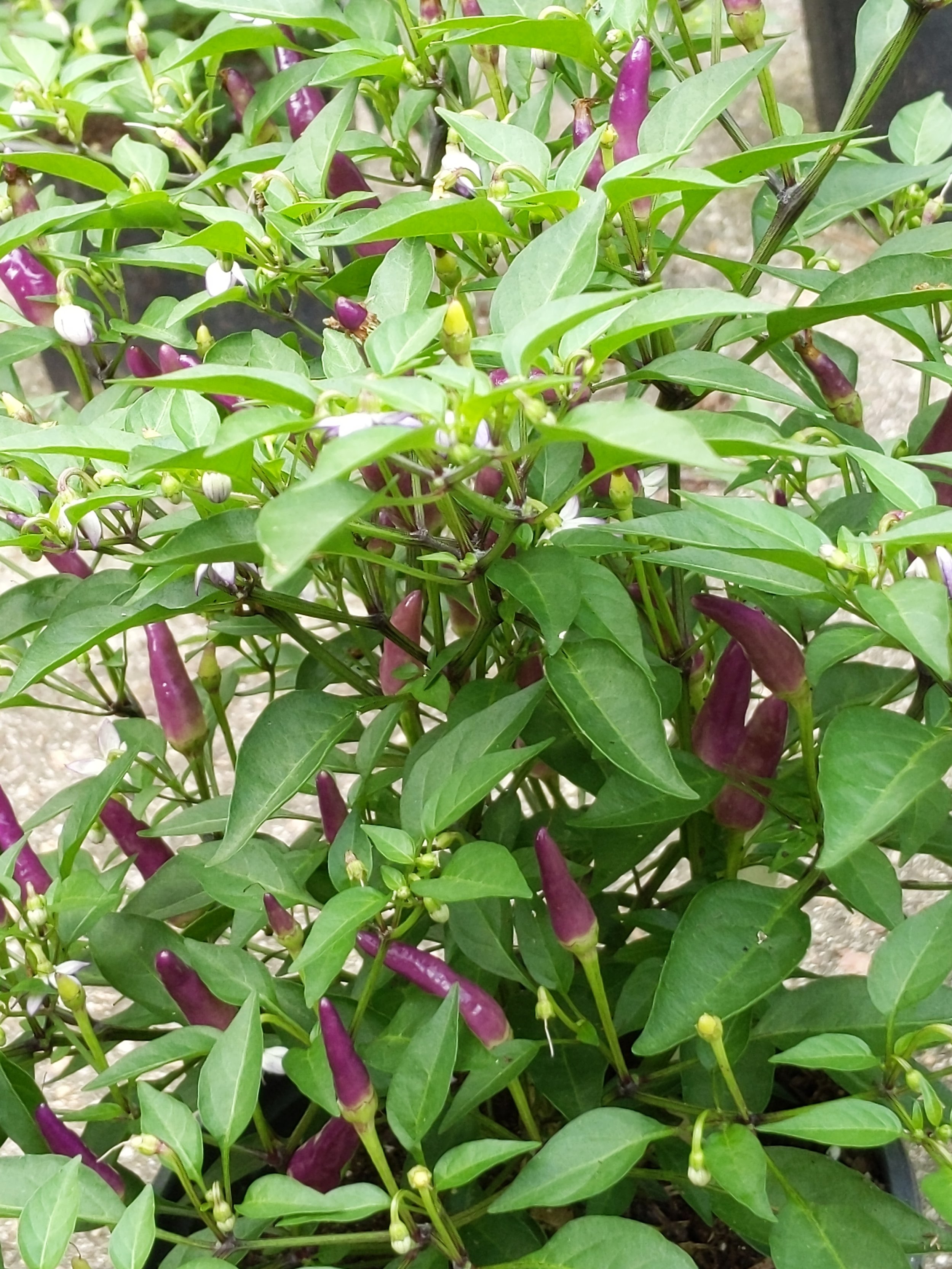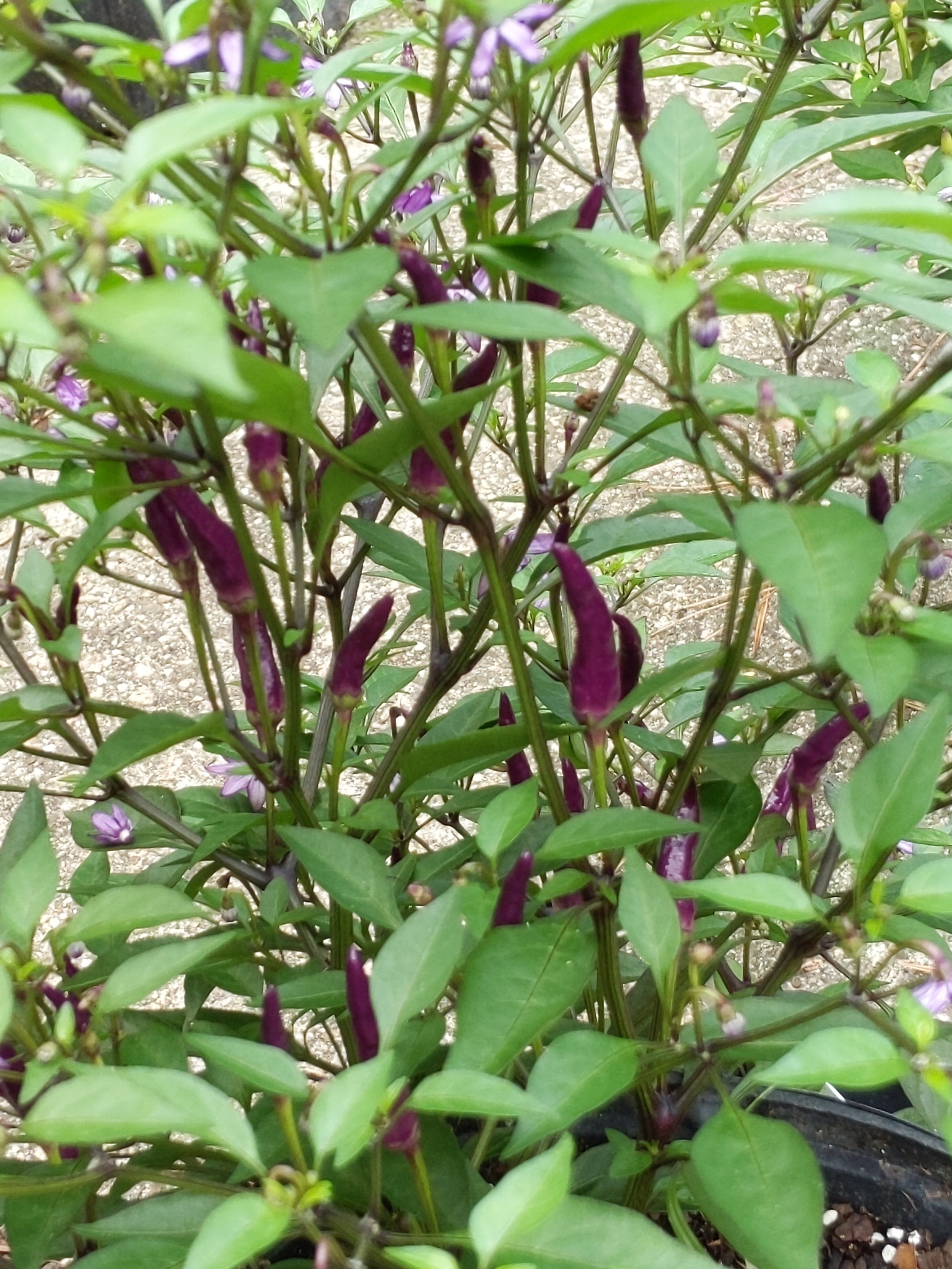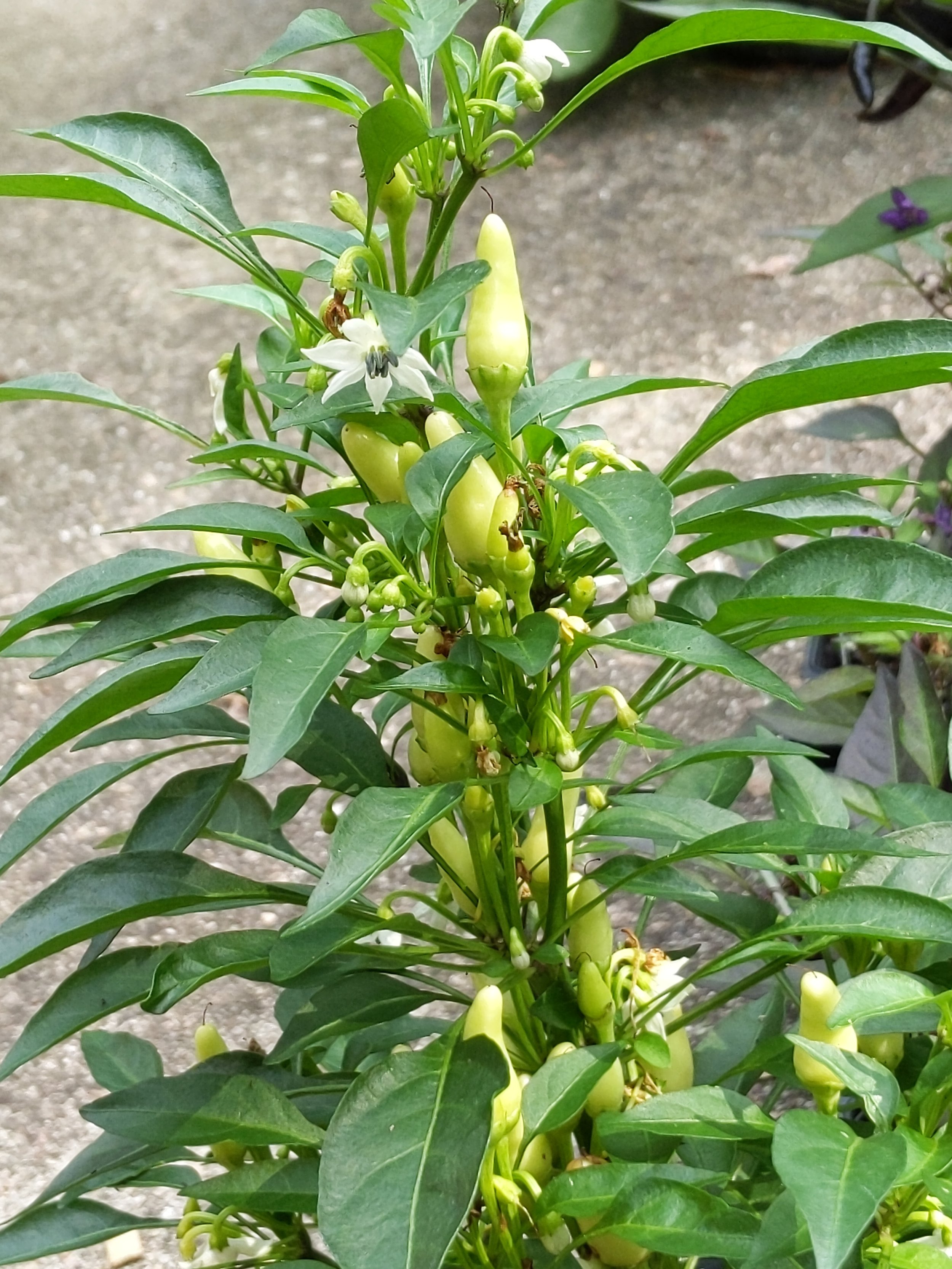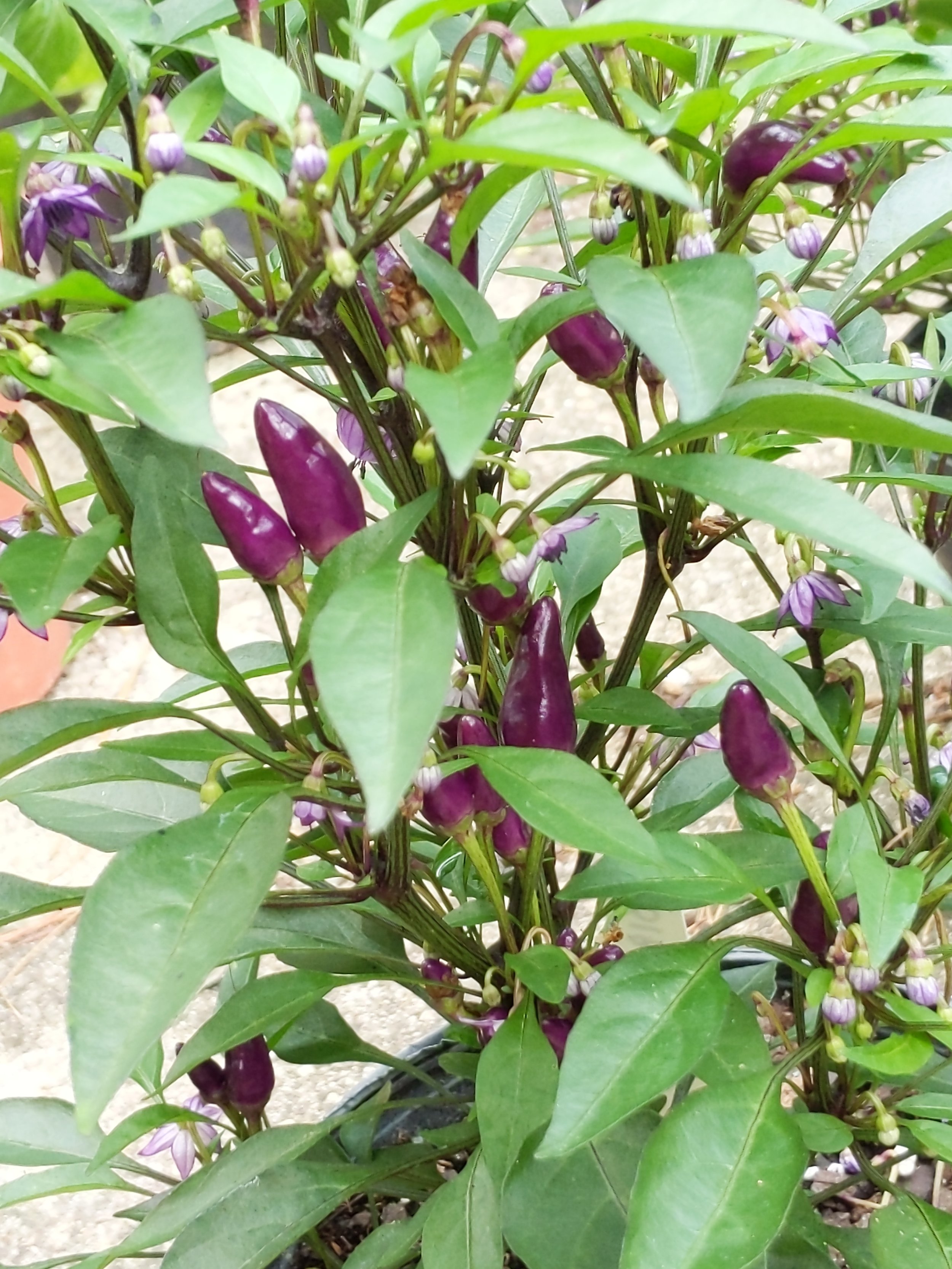Back in 2002 I was ambling through an arboretum (JC Raulston, I presume, though it could have been elsewhere) and there were gorgeous colorful hot pepper plants growing with a profusion of ripe, red peppers. Somehow, one of the quite small fruit (Thai pepper shape and size) ended up in my pocket. I saved seeds from it, and it is designated “Arboretum Purple Leaf” in my seed log.
Seeds were saved, and a few were planted in 2003, and the project for which the latest update is provided in this blog was launched (though I really didn’t know it at the time). There was quite a bit of diversity of leaf color, flower color and fruit shape and color. One form seemed quite easy to start to stabilize, and I named it Gemstone. Possessing dark green leaves with heavy purple shading (especially in full sun) and purple flowers, the pointed cone shaped peppers transition from a vibrant deep lavender, through cream, yellow, and orange, finally ending up red. I am growing Gemstone this year and will show it once the peppers start to form and mature, so that the full range of color is provided.
Another type emerged from that arboretum-borrowed pepper that had nearly normal green foliage, white flowers tinged with purple, more slender, darker purple fruit that also went through color changes on their way to red. This one was named Bouquet, and proved to be far more challenging to nail down, with all sorts of variations popping up on each attempt.
Last year I grew a number of various saved seed lots in an attempt to finally nail down the pepper I wish to call Bouquet, and sharing the pics on Instagram drummed up lots of interest. Therefore, many samples of seed made the rounds, and I am already seeing early results. I do want to take a look at the ones I am growing and provide my opinion on where we may go next with each.
A pepper plant given to me by a friend last year isn’t formally part of the project, but I distributed seeds anyway, designated P18-2 - I believe it to be the variety Trifetti, and it has the most beautiful foliage.
Picture of plant P18-2 taken on June 22, showing the complex foliage pattern and purple flowers
Last year, P18-3 had green stems, green leaves, white flowers and pale yellow to cream colored, slender peppers that ripened orange red. I seem to be getting the same results this year. All of the seedlings seemed uniform - this is a pretty pepper that has yet to be named.
P18-3 plant showing the leaf and pepper color and shape; flowers are white.
My seedlings for last year’s P18-4 looked quite uniform, shown below. The growth is more upright/columnar. Foliage is true green, flowers are white tinged with violet, and the peppers are a vibrant deep lavender, sort of a slender upward pointing cone in shape. This is not a Bouquet candidate in plant habit, but is quite lovely.
Pepper plant from P18-4
Once again, plants from P18-5 seemed quite uniform, so only one was planted. This is a more spreading plant with colors similar to P18-4, but the fruit seem to be forming more in clusters. This is not the primary Bouquet candidate, but is close, and really gorgeous so far.
Plant from P18-5
With P18-6, there seemed to be more seedling variation, so I planted two seedling types. The plant on the left, below, has dusky green leaves, pale lavender flowers, and dark lavender upward pointed slender cones - this will be the main Bouquet candidate. The plant on the right is another of the cream colored fruit, white flowered, green foliage types seen with P18-3.
P18-7 also showed seedling variation, and two seedlings made the cut for the garden. As you can see, they are quite similar, with slender lavender peppers. Not Bouquet, most likely, but nice nonetheless.
Finally, we have the most variable seedling sample of all, P18-8, of which I grew three plants, see below. The first and third plants are quite upright/columnar, with more cone-shaped fruit - the first having green leaves, white flowers and cream colored peppers, the last having beautiful lavender cones. The second plant has very distinctively dark, purple peppers with a slight hint of brown.
The diversity remains quite broad, and all plants are attractive and productive…these are all growing in one gallon pots. Please find me in Instagram - @nctomatoman - and use the tag #bouquetpepperproject to show pictures of the ones you are growing. Use the number on the packet I sent to designate them clearly. What remains is to see the full color range on these - the transition between the pics above (the initial/unripe) color, the transitional colors, and the final color, to determine the next steps.





